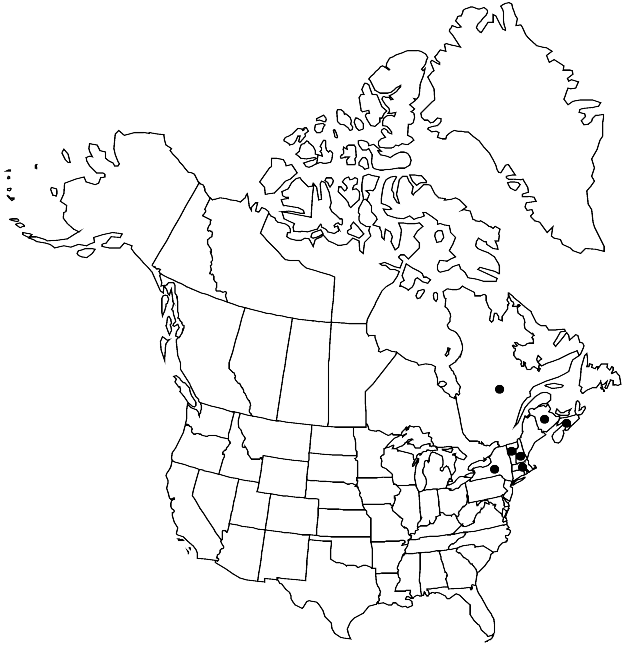Hygrohypnum montanum
in H. G. A. Engler and K. Prantl, Nat. Pflanzenfam. 231[I,3]: 1039. 1908.
Plants soft, green, yellow, or yellow-green, dark brown, usually only youngest parts yellow to yellow-green. Stems to 2 cm, usually shorter, denuded basally, irregularly branched; hyalodermis absent, epidermal cells small, walls thick, similar to subadjacent cortical cells, central strand absent. Leaves somewhat distant, straight or falcate and squarrose-canaliculate distally, little different when dry or moist, shrinking laterally and margins slightly involute with concomitant twisting in apex when dry, usually ovate, sometimes ovate-lanceolate, broadly concave proximally, (0.3–)0.5–0.9(–1.1) × (0.2–)0.3–0.5(–0.9) mm; margins narrowly recurved proximally, less often plane, coarsely to finely serrulate, most conspicuously distally, or entire; apex acute to somewhat acuminate; costa usually double, short, slender; alar cells quadrate, short-rectangular, or irregular, region not or scarcely differentiated; basal laminal cells similar to or wider than medial cells, walls more incrassate, irregularly pitted; medial cells short-fusiform to long linear-flexuose, (17–)25–50(–69) × (3–)4–5(–6) µm; apical cells similar, few cells may be papillose abaxially by means of over-riding end walls; marginal cells somewhat shorter. Sexual condition autoicous; perichaetial inner leaves lanceolate, margins coarsely serrulate in apex, apex long-tapering, costa single and slender or broad and 2-fid. Seta yellowish red to red, 1–1.7 cm. Capsule with endostome cilia 2 or 3.
Habitat: Irrigated, sand covered rock in or beside montane streams
Elevation: moderate elevations (500-700 m)
Distribution

N.B., N.S., Que., Mass., N.H., N.Y., Vt., n Europe.
Discussion
Hygrohypnum montanum is most easily recognized by a combination of individually variable features: tiny ovate to ovate-lanceolate leaves with recurved proximal margins, serrulate distal margins, and stem lacking a central strand. Also useful but difficult to see are the few abaxial apical cells that are papillose by anteriorly overlapping end walls. The stems are prostrate to slightly ascending at the apices. The alar cells have incrassate, slightly pitted, yellowish walls.
Selected References
None.